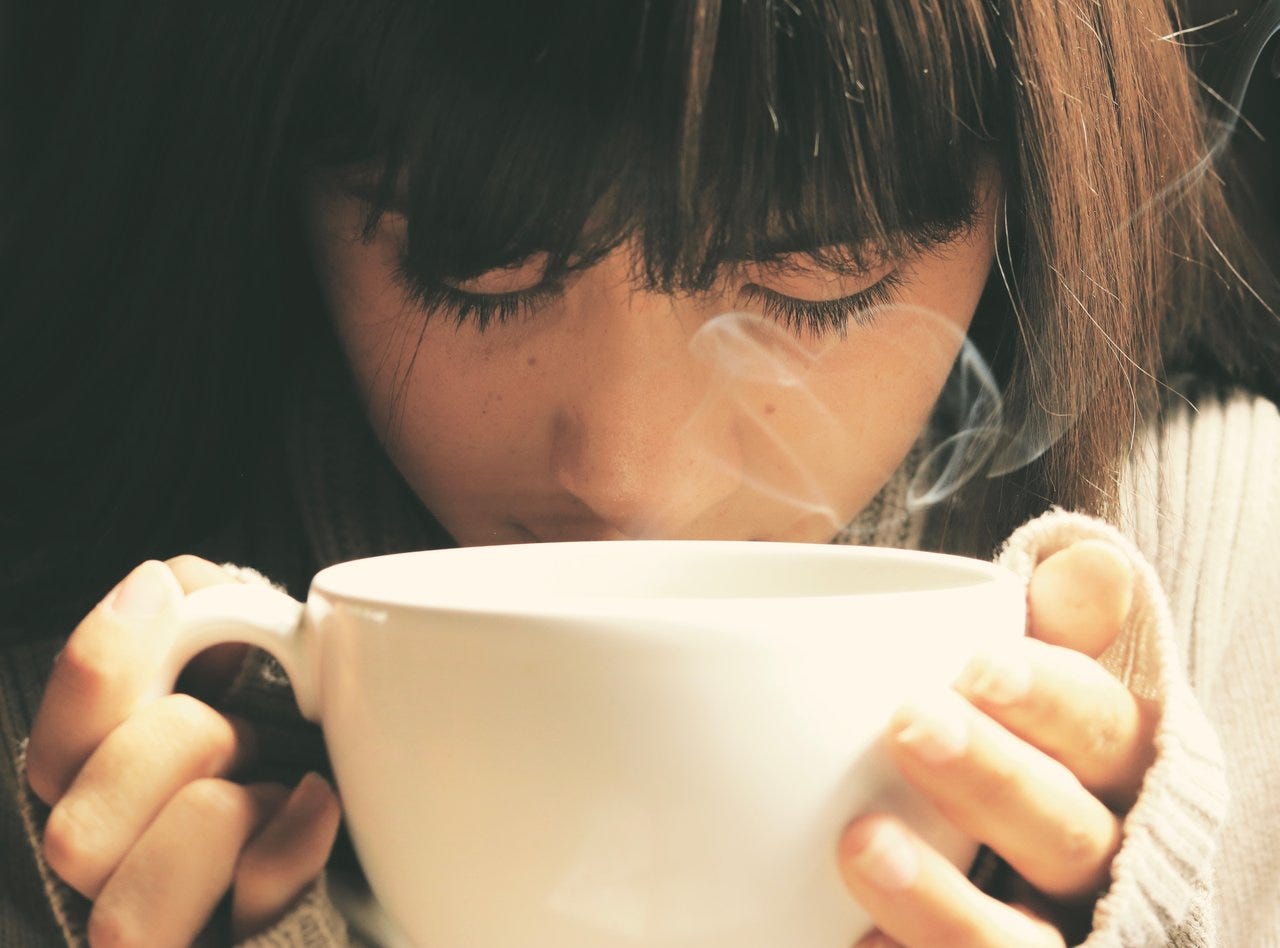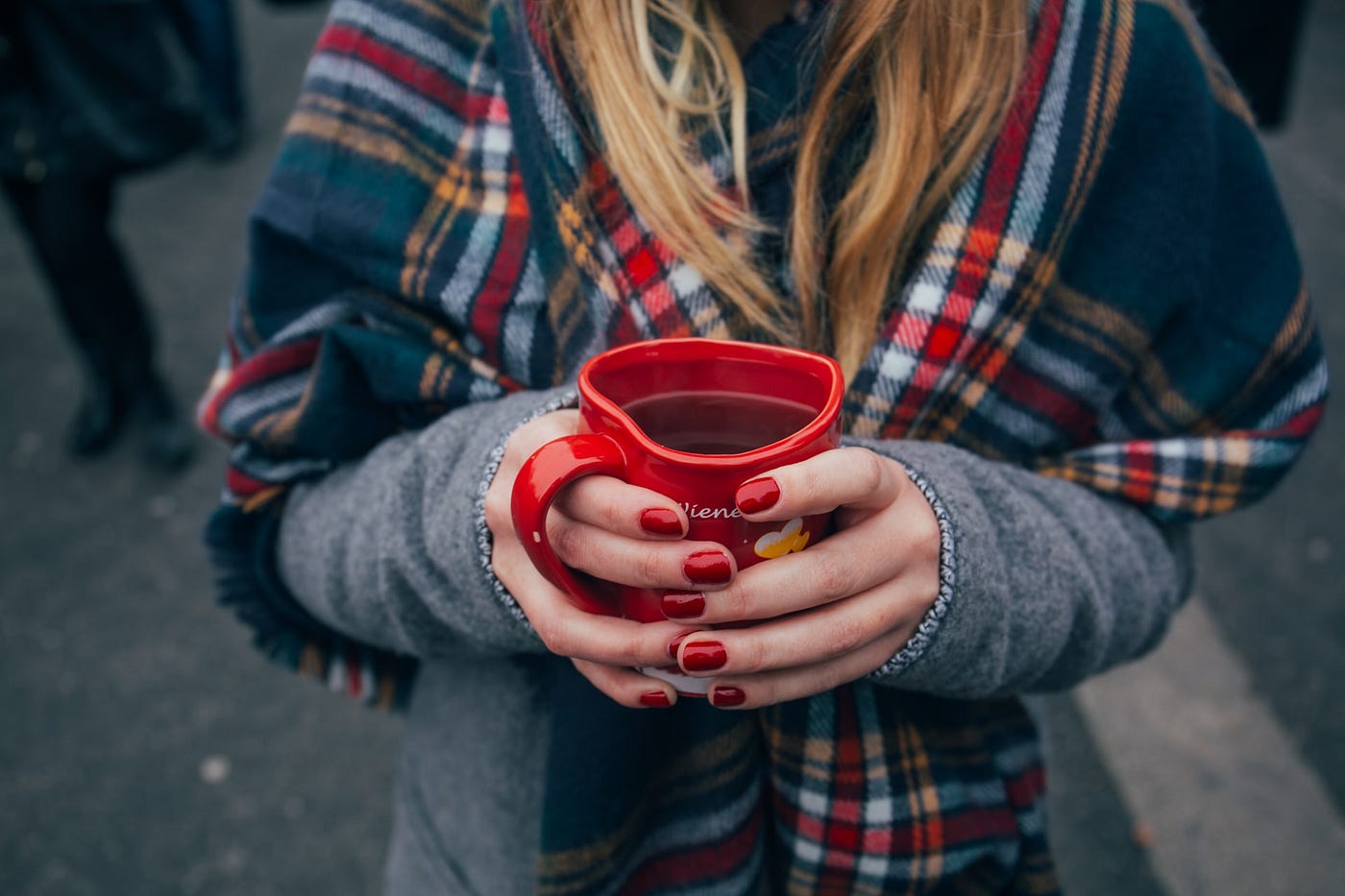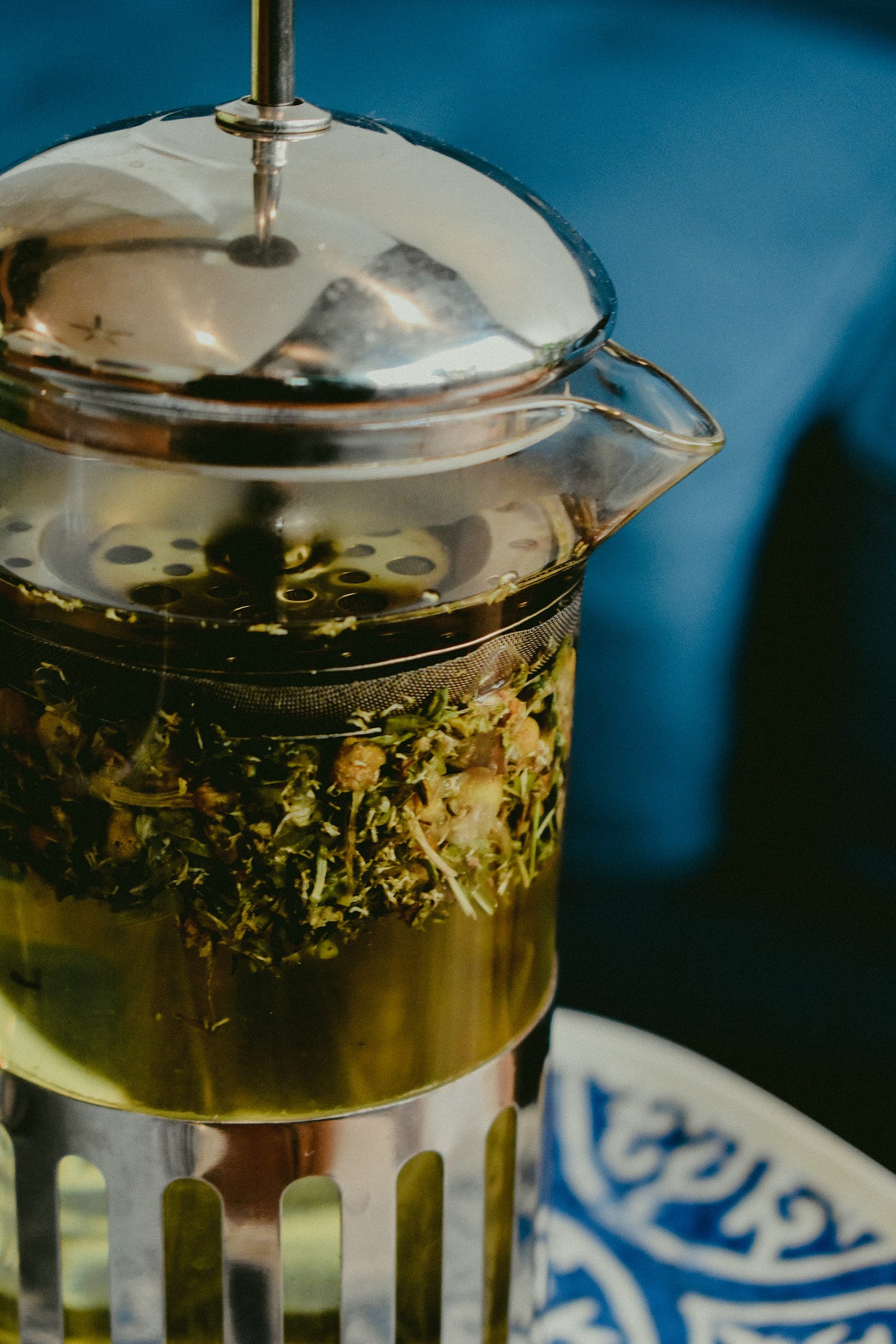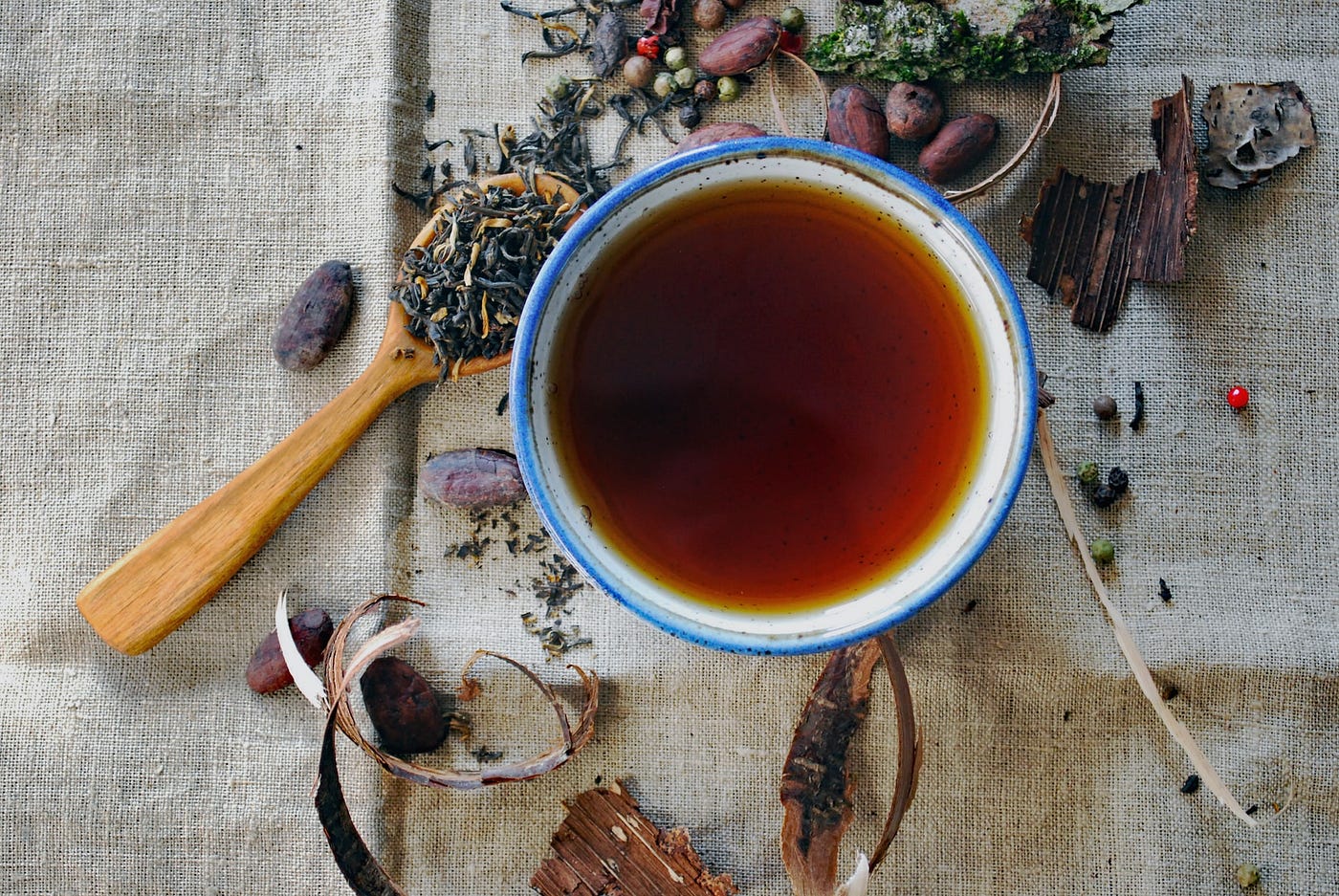How To Use A Coffee Filter For Loose Leaf Tea
The Strain Is Real
10 means to strain loose leafage tea without a strainer or infuser.
In this commodity, nosotros will explore ten easy means to brew and strain loose leaf tea without using a strainer or an infuser.
You'll be surprised past what everyday household objects tin can exist used to aid you make that perfect cuppa.

1. The Traditional Method
The origin of tea drinking began in Ancient China, and so information technology'southward no surprise that the traditional Chinese method of straining tea sits at the top of this listing. The traditional method involves a small bowl with a lid, called a Gaiwan. The curt one minute and thirty-second video below volition apace show y'all how a Gaiwan works.
Now, you lot probably don't have a Gaiwan immediately at manus. But that'southward okay because you lot don't need i. Y'all can replicate the process of brewing your loose tea in a Gaiwan by using a pocket-sized basin or wide mug and a small plate or a saucer. Piece of cake peasy, tea-sy brew-sy.
2. The Java Filter Method
If you are unfortunate enough to share a business firm with a coffee lover (or yous are, for some bizarre reason, equally much a coffee lover as y'all are a tea lover), so it'south probably safe to assume that you have some paper java filters lying around somewhere. Unbleached filters are best.
Carefully rinse the paper filter in some hot (non humid) water first in order to cleanse information technology of the papery taste caused by microscopic paper fibres. Java drinkers generally cannot gustatory modality the newspaper in their beverage equally their drink is unremarkably stronger. But in the average tea, you probably will sense of taste paper if y'all don't rinse it first.
Place the filter in your chosen mug and add together some loose tea leaves into it. Pour hot h2o over the tea leaves in a circular movement and and then leave it to brew to your desired forcefulness. When your tea is ready, just remove the filter with the leaves inside for a foliage-free cup of goodness.
Alternatively, you could brew the loose tea in a teapot so, using an elastic band, affix the coffee filter to the spout to stop any loose tea escaping when yous pour the liquid out. Using this method you can cut your filters in half for less wastage, equally you won't need the whole thing in 1 go.
3. The Newspaper Towel Method
This is similar to the coffee filter method above, for those lucky enough to non be sharing a house with a crazed coffee fanatic. All you demand is a paper kitchen towel instead of a coffee filter.
Make sure y'all have decent quality paper towels kickoff. If your paper towels tend to fall autonomously when they go wet and so they probably won't do you any good. As with the java filters, you'll probably want to cleanse the paper towel to shake off those microscopic paper fibres that'll otherwise interfere with the flavour of your tea.
Fold the paper towel in one-half into a rectangle. And so fold it in half again, and so that you accept a square. Open one corner of the square and put your loose leaf tea in information technology. Place in a mug and slowly pour hot water and leave to mash to your desired strength. Below is a i minute video showing this process.
4. The Sieve Method
Most all mod-day kitchens will have a sieve in them.
Merely add the loose foliage tea into a mug (or a teapot) and pour on hot water to brew. When the tea is ready, carefully cascade the tea through a sieve into a second mug to filter out the leaves.
v. The Slotted Spoon Method
As with the sieve, most modern-day kitchens volition take a slotted spoon. This is a cooking utensil which comprises of a spoon with holes in information technology, used to stir nutrient while it is cooking.
As with the sieve method, brew the loose tea in 1 mug (or a teapot) and then transfer the liquid to a second mug, using the slotted spoon as a filter.
The success of this method depends on both the size of the tea leaves and the size of the holes in the spoon. Generally speaking, most blackness teas volition only autumn through the holes, whereas whole leaf greenish teas will generally do well with this method.
6. The Fork Method
This is probably the point where some people volition gyre their eyes and stop reading this article. But bear with me. This method is most helpful for tea-loving campers, hikers and picnickers who forgot to pack their tea strainer.
The fork method uses the aforementioned approach equally the slotted spoon method in a higher place. Brew the tea in a mug or a teapot. And then when information technology is ready, pour the liquid into another mug using the fork to filter and push back any tea leaves.

seven. The Tea Bag Method
Equally a drinker of loose tea, you may or may not have some tea bag-based teas. 1 of the reasons some people prefer loose tea leaves as opposed to tea in tea bags is because of plastic contagion from the glue used to seal the tea pocketbook.
It should be noted that not all tea numberless are sealed with glue. Some brands use a procedure called heat sealing to seal them and some apply cord seals.
Merely slit open the tea bag where it is sealed. If the bag is sealed with glue and then you may want to cut that part off entirely and discard information technology. Unless you experience similar experimenting with alternative custom blends, dispose of the contents inside the handbag as well and add in your loose leafage tea.
Fold the tea bag in one-half and secure it with a clean toothpick or condom pin (exercise not apply sewing needles or staples, for safety reasons). Then mash the tea in the mug equally y'all normally would with a tea bag.
You could consider making several of these custom-filled tea numberless and sealing them by sewing them shut with natural thread, to save y'all having to repeat the process whenever you fancy a cup of tea or for the convenience of having the tea bags ready at work. Retrieve to store in a dry identify, preferably in an air-tight container, and out of direct sunlight.
8. The Can Foil Method
The tin can foil method is similar to the paper towel method above. However, it may leave backside a slightly metallic taste in the tea, depending on the quality of the foil.
Cut out a piece of can foil (let'southward say roughly 25cm by 25cm). Fold it in half into a rectangle. And so fold it in half again into a foursquare. Utilize a abrupt instrument to make small holes into the corner of the square which is closed.
Open a pocket in the foil and place it into your mug. Add together the loose tea leaves and slowly pour the hot water on top. Go out to brew to your preferred strength and remove the foil filter. Be careful as metal is a very good conductor of heat.
One of the benefits of using foil over paper for a dwelling house-fabricated filter is that y'all tin can simply wash and reuse the foil filter later. However, in that location is petty manner to avoid a potential metallic gustation, every bit foil cannot be pre-filtered like newspaper can.
9. The French Press Method
The French press, every bit you probably already know, is intended for brewing java. However, a lesser-known fact is that it tin also be used to mash tea, much to the horror of coffee fiends (and probably the French). If you are a regular consumer of loose leaf tea, you could consider purchasing a cheap French coffee press and repurpose it for tea brewing. This is as well an excellent way to rapidly make a lot of loose leaf tea if you host guests often or run a business which serves tea. In fact, if you've ever stayed in a posh-ish hotel, yous might have been served tea at breakfast in a French printing, gear up to pour out yourself.

If your French press was previously used for coffee, make sure you make clean it thoroughly to avoid whatever traces of evil coffee contaminating your heavenly tea.
Remove the meridian of the French press so spoon your loose leaf tea into the beaker or jug.
Pour in the hot h2o then put the meridian back on and ensure the plunger is correct at the top.
Allow the tea to settle and mash to your desired strength. When the tea is set up, printing the plunger downwardly slowly, ensuring that no or little tea leaves are in the top of the beaker or jug.
So simply pour the tea into a mug.
10. The Double Cup Method
For this method, you demand two mugs and a cup. Add the loose tea and hot water in i mug. Allow information technology to brew to your desired forcefulness.
Place the cup partially in this mug as y'all cascade the liquid into the second mug. The cup acts every bit a filter or barrier preventing most of the tea leaves going into the second mug.
This method takes a chip of practice to cascade the tea from one mug to another without spilling the liquid, which could potentially burn down your easily slightly. Then this probably isn't the best method.
There we have it, ten culling methods to mash loose leaf tea without a strainer or infuser. I hope that you institute this article enlightening or that you at least picked up a helpful tip or two. Enjoy your cuppa!

How To Use A Coffee Filter For Loose Leaf Tea,
Source: https://scottabutler.medium.com/the-strain-is-real-e4e8b3395646#:~:text=Place%20the%20filter%20in%20your,leaf%2Dfree%20cup%20of%20goodness.
Posted by: adamsboyeto.blogspot.com


0 Response to "How To Use A Coffee Filter For Loose Leaf Tea"
Post a Comment